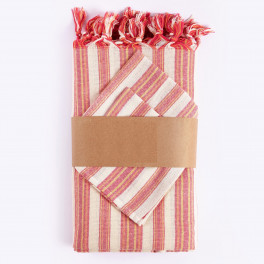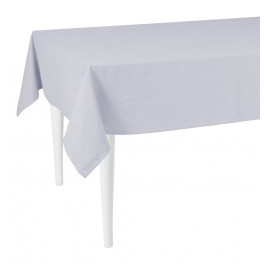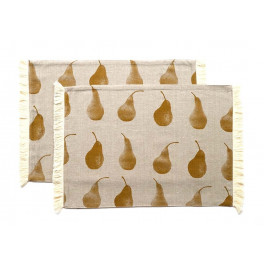Flatware isn’t the flashiest component on the dinner table, but obviously has crucial role in place settings. A quality set is both durable and attractive, and just as with dinnerware, is an investment. If you’re wondering what the best stainless steel flatware is, or aren’t sure what 18/10 stainless steel means, this flatware buying guide will get you on track to making an educated purchase. Let’s start with the basics.
What is a Flatware Setting?
A typical flatware setting for one person is a dinner knife, dinner fork, salad fork, soup/cereal spoon, and teaspoon. If you buy basic flatware service for eight, there will be eight of each of these utensils, and usually five pieces of basic serve ware as well (serving spoon, pierced spoon, serving fork, butter knife and sugar spoon.) This is a typical 45-piece set. Basic service for 12 is a 65-piece set, and basic service for four is a 20-piece set (serve ware not included.) If you don’t plan on serving traditional formal meals, this is likely all the flatware you will need.
For more formal settings, look for sets that includes additional components. Steak knives, butter spreaders and dessert spoons are the most common additions. Select what makes sense for your personal taste and likely menus. If you are unable to find a prepackaged set you like, you can often order supplemental pieces from open stock. But remember, you should obtain basic service for an appropriate number of place settings before going all out on fruit spoons and oyster forks. What’s an appropriate number? How many dinnerware place settings do you have, or are you planning to have? Six? Eight? Twelve? That’s your target number.
Be aware that not every brand is going to have every piece in every pattern. High-end flatware will have most if not all, but check the brands and patterns you are interested in before buying. If you simply must have iced tea spoons, make sure they are an option. Even if you can’t budget your entire dream set right away, find out ahead of time what’s available so you can add on later, and/or replace lost pieces.
Why Stainless Steel?
If you’ve even casually perused flatware options in a store or online, you know that almost all the modern options are stainless steel. It’s not that you can’t get real sterling silver or plated silverware; it’s that a lot of upkeep is involved, at a price very few people are willing to pay. Silver is expensive, and it tarnishes. Stainless steel is affordable, and it stays shiny. How shiny? Well, let’s look into that.
There are three grades for stainless steel flatware: 18/10, 18/8, and 18/0.The first number tells you the percentage of chromium present in the steel. Chromium’s main use in steel applications is resisting corrosion, including rust -- 18% is the standard for quality flatware. The second number is the percentage of nickel present. Nickel has a different job, which is mainly making the steel bright, with some corrosion resistance thrown in. The higher the percentage of nickel, the brighter and “more silver” the stainless steel will look.
So, what’s the best stainless steel flatware? Definitely 18/10. 18/8 is pretty good, too, but I recommend against 18/0. It’s still considered high-quality, but it's more likely to get rust spots over time, and doesn’t have as lovely a sheen as 18/10, or even 18/8 flatware.
There are two finishes in stainless steel flatware: bright and satin. Bright, of course, is extra shiny with a mirrored quality, while satin is a brushed finish with a more matte appearance. Choosing one of the two is basically a matter of personal taste. Satin does wear a bit better over time, but well cared for quality flatware in either finish will hold its beauty for many years.
If the silver look isn’t for you, there is a gold option. Not solid, of course, but gold plated. Many brands offer patterns in gold plate over, you guessed it, stainless steel. Gold plate does not need to be polished the way silver plate does, and it is not especially expensive. However, gold plated flatware has a very specific look, and doesn’t pair well with casual dinnerware. If you feel you must go for the gold, I would recommend it either as a second set of flatware for your dinner party table, or as just an accent on silver toned stainless steel flatware.
What are the Best Brands of Flatware?
There are dozens upon dozens of quality flatware manufacturers. Oneida, Towle, and Reed & Barton are just a few well established companies with over a century in business. Younger brands, such as Ginkgo, Knork, and Gourmet Settings also have solid reputations and offer quality options. So, the good news is there is no shortage of beautiful and affordable flatware for home use.
If you’re not sure where to buy your flatware, try Bed Bath & Beyond for a wide range of price points. Target offers some good budget options, and department stores like Macy’s, Bergdorf Goodman, and Neiman Marcus have high end choices. Another option is checking out specific brands online, where you can view numerous patterns all in one place. I do recommend actually handling flatware before you buy it if possible. Some people prefer heavy flatware, others like something more mid weight. If a piece feels light in hand, it tends to be a sign of cheap flatware.
Outside of stores and online shopping, another option for obtaining a good set of flatware is buying a vintage set. I was fortunate to inherit my grandparent’s Rogers Co. (Stanley Roberts) stainless flatware in the Jefferson Manor pattern, which I love. My flatware is over seventy years old, and still both beautiful and dependable.
If you like the look of vintage stainless, eBay can be a great place to go for deals. Be aware that vintage flatware tends to run a little bit smaller than its contemporary counterpart, so check out measurements, not just photos. Also note that there will likely be some “antiquated” differences, such as forks with three tines instead of four. To some, this is charming, to others, too old fashioned. It’s all about what works for you and your style of place setting.
How do I Pick a Flatware Pattern?
Choosing a pattern is important. Think about it. You’ll probably be looking at these forks, spoons, and knives for at least a decade. Not only should you like the pattern you select, you should also like the way it works with your dinnerware.
Consider dishes and flatware in tandem. An ornate set of flatware can complement simply patterned china, but two flamboyant patterns may not mix well, unless you are going for a shabby chic or French country décor vibe. What’s most important is that you like the pairing of your dishes and your flatware. Simple, classic patterns tend to work with everything, so if you want to play it safe, that’s the way to go.

Photo by All About Space on Shutterstock
On the opposite side of the spectrum, I’ve seen stunning tablescapes with mix and match flatware in multiple patterns. There’s nothing stopping you from going that route, and scouring second hand stores and auction sites for good deals on vintage pieces can be tons of fun. Just be aware that you won’t be bringing as much versatility to the table. And remember, you’re much more likely to replace dishes in the next ten years than you are to replace flatware, so make the flatware count.
At the end of the day, the most important thing to remember when buying flatware is that it’s an investment. Take your time selecting a quality product that you can envision on your table from four course dinners to a simple plate of pancakes… and bon appétit!

























